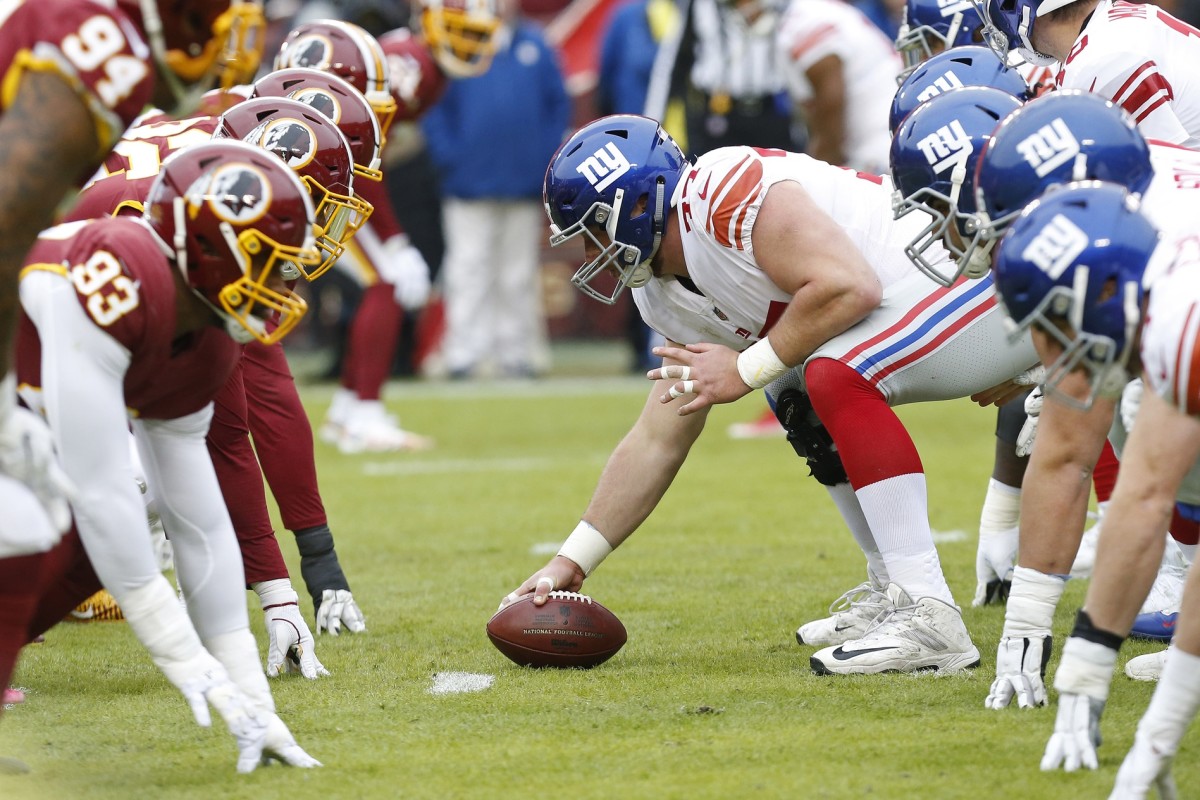Examining the Giants Pass Protection Issues

Through their first ten games of the season, the New York Giants offensive line has allowed the second-most quarterback hits (81) in the NFL.
The line got off to a solid start this season, allowing an average of 10.5 pressures in their first two games.
This, of course, was with veteran quarterback Eli Manning at the helm. Since Daniel Jones took over in Week 3, the Giants’ pressures have increased to an average of 12.5 per game.
Despite his immobility, Manning only had a 2% sack percentage rate on his dropbacks as opposed to Jones, who has a rate of 10.7% on his dropbacks.
Also, according to Pro Football Focus, Jones takes an average of 2.68 seconds to throw the football while Manning got the ball out quicker, averaging 2.53 seconds.
On paper, the Giants appeared to upgrade their offensive line heading into 2019 by adding right guard Kevin Zeitler and right tackle Mike Remmers to go along with the return of center Jon Halapio from a season-ending fractured ankle.
Unfortunately, the new unit has struggled. Halapio has allowed 18 pressures and surrendered two sacks, the third-most among centers.
Left tackle Nate Solder has also struggled to deliver compatible production after signing a four-year $62 million deal. Solder allowing the second-most sacks (8) and the fourth-most total pressures (35) among NFL tackles this season.
In 2018, the Giants surrendered 47 sacks and 97 hits (14 in NFL). In 2019 they have regressed with 81 hits and 34 sacks in 10 games (on pace for 60 sacks and 127 hits).
At times, the protection calls and reactions have been off. In Week 8, the Giants put a double team on the right side of the line, but no one picked up a blitzing Devon Kennard, who came right up the middle untouched. Kennard hit Daniel Jones, the quarterback throwing a lateral that Kennard scooped up for a score.
But the pass blocking struggles haven’t been all on the offensive line. Running back Saquon Barkley has struggled in pass protection.
A recent example of this saw him get totaling outmatched in the Week 10 game against the Jets when safety Jamal Adams pushed Barkley back far enough to get into position to take the ball out of Jones’ hands and return it for a touchdown.
Per Pro Football Focus, Barkley has allowed seven total pressures, three of which are sacks. That’s one less pressure from his rookie season total, despite playing in three fewer games because of his ankle injury.
So how do the Giants fix their pass blocking issues?
The first thing they will need to do is determine if it’s a matter of the coaching, the talent, or a mixture of the two.
Critics have pointed to offensive line coach Hal Hunter and the fact that his units of late haven’t exactly been top-performers in the league.
Based on numbers from Pro Football Focus’ offensive line blocking reports over the last two seasons, the Giants have allowed 45 sacks over that period (though again to be fair, some of those sacks can, at times, be attributed to the quarterback holding the ball too long).
Coaching aside, upgrading the offensive line looks like it will once again be on general manager Dave Gettleman’s to-do list this off-season.
With Solder set to make $9.9 million each of the next two seasons, the Giants might look to move on to a younger player who can potentially be their left tackle for the next decade.
If Solder is an off-season cap casualty, he will cost the Giants $13 million in dead cap money, but it could be worth it if the team finds a young and healthier left tackle to pair on the left side with left guard Will Hernandez.
If the Giants want to go the free-agent route, Colts left tackle Anthony Castonzo is set to be an unrestricted free agent.
Although he will likely command a deal that potentially might make him the league’s highest-paid offensive lineman, Castonzo is still playing at a high enough level and could be worth considering for a team projected to have upward of $60 million in cap space if it is looking to shore up their offensive line.





